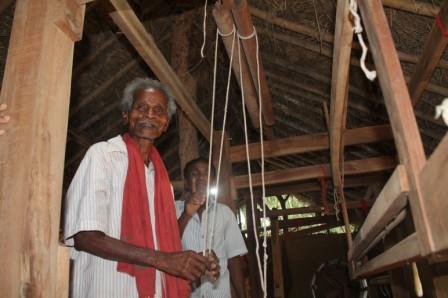Even though Odisha has a rich tradition of some of the best weaving patterns, it is still struggling to reclaim its glories. Here’s an effort to understand the revival need of the handloom sector of Mayurbhanj
BHUBANESWAR: At a time when the whole world is craving for handlooms, a natural dye based textile, Odisha, which is traditionally home to the some of the rarest surviving handlooms is faced with fresh challenges to ensure the right ecosystem for skilled artisans to have sustainable livelihood.
North Odisha, especially Mayurbhanj district has a glorious history of handlooms. However, with the passage of time and absence of a favourable ecosystem, the region is losing its charm in the handloom space.
An odyssey of weavers from Bengal to modern Odisha, under the guiding yearns of Chaitanya Mahaprabhu in 15th century, led to a unique blend of artistry in drapery. This was possible due to the peculiar migrant’s resolve to better their past and write a sincere new chapter.
However, the trend bore the brunt of liberalism, tender grasp on consumers, poor wages, and inherent woes of middlemen. The sarees of Bomkai, Sambhalpur, Jagatsingpur have regained their lustre because of untiring efforts of revivalists and firm support from responsible sections of society.
However, post liberalisation situation has changed dramatically. Over the last two decades, where the country’s handloom and weavers count have reduced by more than a half, the weaving ecosystem of the region has been completely wiped out. The slow death of the handloom industry coupled with weak co-operative alliances and the lack of access to a wide marketplace handled to insurmountable debts, loss of artistic dignity, poor socio-economic standards culminating in cases of suicide amongst this community.
Uncertain about their future and staring at starvation, the craftsmen who in the past were engaged in crafting some of the most intricate heritage weaves had to resort to taking up works at quarries, agricultural and manual labour, both within and outside their villages. As if this deprivation of artistic practice was not enough, compounding the situation, the ‘desertification’ phenomenon caused by ground water depletion in the nearby areas, had reduced farming to a ‘one-season’ activity; thereby making it even more difficult for the villagers to sustain themselves.
Perhaps, pinned it should be to these artist’s incessant positivity that amidst all the despair, they recounted their days of weaving proudly to the reporter: the intricate patterns challenge, the ‘one-saree-a-day’ production rate, and the active role co-operatives played once to ensure competitive pricing for their labour and craftsmanship.
Bindu Vinodhan, the founder and the architect of the ‘Tanta Gatha’ initiative, “Spearing through numerous discussions that took place during the research phase in Chuliaposi, a message emerged with distinct clarity: if provided with the necessary support, a majority of the weavers wanted to return to their heritage of looms and craft. It was a resounding emphatic affirmation of the fact that years of legacy could not be lost to systemic apathy.”
“This affirmation, coupled with our desire to revive an old weaving tradition, marked the genesis of Tanta Gatha. Tanta Gatha aims at reviving, rejuvenating, and sustaining the old weaving tradition that once was the pride of Chuliaposi and Machhia,” she added.
Chaitali Shome, OP
